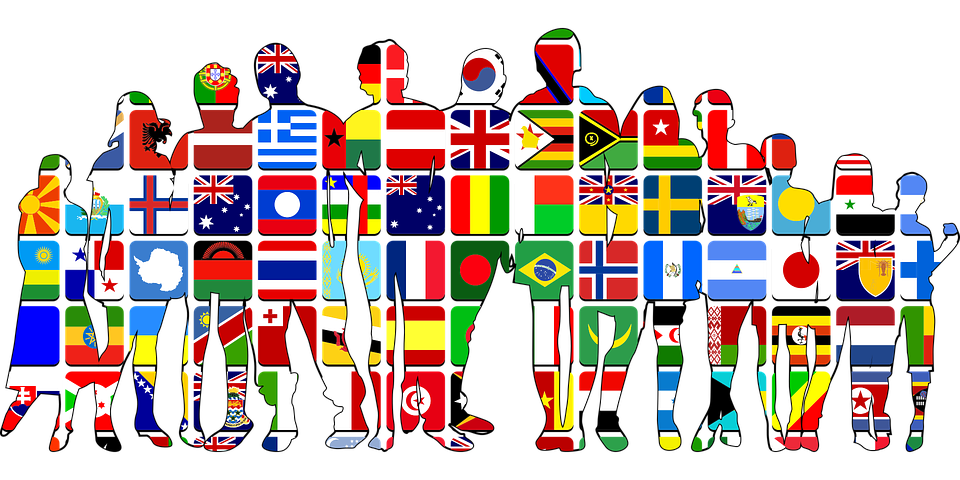
UNITY IN CHAOS
“How do you manage your target market for Em-Ah-Eye?” Mr. Li blurted out in the middle of our business meeting. “I’m sorry?” I asked as I resisted to furrow my brows trying not to offend the person. Suddenly, the momentum of the meeting was derailed. “Was that, MAI?!” I thought to myself.
This may happen in many multilingual workplaces, a team member who is not a native speaker of English struggles to express his thoughts to the untrained ears of his teammates. With products, services, and ideas going global, businesses around the world cope up with the call of being competitive in other countries and cultures. To be globally competitive, these companies need to employ new talents and skills from these varying cultures. These are well-educated people, with a perfect grasp of grammatically correct English. But they speak with heavy accents – tinged and colored by their mother tongues. Thus, making linguistic diversity inescapable. This, in many ways, can affect the overall performance of an organization regarding time, money, and effort. “I mean, Magnetic ‘Wesonance’ Imaging systems. That’s ‘Em-Ah-Eye.'” This time, with a hint of embarrassment, Mr. Li, the product specialist from China, clearly struggled to explain what he meant. Compared to a native English-speaking employee, it took twice the amount of time for that guy to communicate across what he meant to say and pronounce correctly. Twice the amount of time, yes, because his mother tongue and cultural background came into play.
Indeed, the growing globalization of many businesses requires multinational corporations (MNC) to embrace the reality not only of linguistic diversity but also its root of cultural diversity. These divergences play a substantial role in a business organization’s success. That is if the many challenges they pose are managed effectively and efficiently. “One of them is to find how organizations can best manage and balance the need for divergence (complexity, diversity, differences) and convergence (cohesion, uniformity, standardization),” Patchareerat Yanaprasart wrote in the abstract of his journal (Yanaprasart, 2016).
On the other hand, Eva Kaiser-Nolden has another take on this. She gave a new definition to cultural diversity first and then, isolated multilingualism. She wrote, “Cultural diversity may refer to nationality and language, but also to a company’s culture or the culture of a single department. Nationality is too narrow a measure of cultural origin since it fails to take into account individuals with an immigrant background. A pragmatic and relevant criterion in the work context would be the number of languages team members speak fluently” (Koppel & Sandner, 2008). This view of Eva Kaiser-Nolden can lead us to standardization, to a meeting on common ground, or to a logical and sensible approach which can be based on proven empirical data rather than plain theories. An example of this empirical observation would be the vital lessons that Patricia Arredondo learned from her experience. She shared, “People are not malleable, and culture is not readily suppressed. Outsiders may adapt to satisfy expected behaviors and norms in the workplace and society, but they find means to express their individuality and cultural identity” (Arredondo, 1996).
It can be deduced, therefore, that amidst the chaos of multiple languages in a workplace, colored by different cultural backgrounds, convergence may be applied. Hence, management of these diversities can then be put into action. The manager’s task here can be gargantuan, but breaking the big challenges of linguistic and cultural diversity into smaller and workable pieces can make the task easier and possible. One of these is realizing that speaking to the emotions of his staff can be the initial key towards transparency and sincerity. There must be oneness not only in the mind of the management and staff of the company but also unity and harmony in the hearts or the emotions of each one. Not all can speak the multiple languages spoken in the workplace but uttering a foreign word or phrase to say ‘Hello!’ or ‘How are you?’ to a foreign co-worker, or learning to say ‘Thank You!’ in the language of the non-native English speaker, can touch the emotions of an immigrant colleague. These may be trivial, but they can have remarkable effects even among the other team members, thereby, improving cohesiveness and positively boosting the team’s performance.
That being said, the initiative needs to come from the management: the senior managers and the CEO, as well. Patricia Arredondo noted the importance of this when she cited how to create the company’s vision and mission statements that value diversity. She wrote, “Involvement of the CEO/executive director or a representative is essential – it will be viewed as symbolic of the leader’s commitment to the process” (Arredondo, 1996). This will show the sincerity of the management in treating the linguistic and cultural diversity of the workplace as an opportunity, not only for the company’s overall success but also, for the employees’ professional growth. Hence, as a tool in the organization’s diversity management, the following recommendations may be taken to diminish the challenges posed by the linguistic diversity in the workplace:
Involve the non-native English speaker in meetings. The CEO or his representative may invite, in person or through a memo, the non-native English speaker to be present at departmental gatherings or, if needed, at a management meeting. The inclusion of the immigrant employee or colleague in the planning sessions shall drive an indelible boost to his self-esteem and could significantly contribute to the company’s direction to its long-term goal of managing the challenges of linguistic diversity.
During these meetings, however, patience in listening and slow delivery of English responses by the native English speakers are recommended. Otherwise, miscommunications may inevitably arise. Heavy accents by the non-native English speakers rooted in their mother tongues may be misunderstood.
Hence, time must be allocated for clarifications. This makes it certain that everyone in the meeting room is aligned and drives the real intent of the management that the ideas shared by the non-native English speaker are valued by the company. Furthermore, this will ensure heterogeneity of ideas to work on a project or solve an issue requiring innovative and creative approach as compared to a homogenous set of ideas voiced out of by the local employees boxed in by their local cultures. Identify the unique strengths and weaknesses of each of the team members. This includes the native English speakers. Careful listening and objective observation of each team member can reveal some surprising gems in them.
Beautiful ideas may not be expressed articulately and eloquently, but asking each one to rephrase through clarifying questions, the manager can jot down and collate the findings. Matching these strengths together can make a synergy of performance yielding astonishing results. In the same vein, complimenting an identified weakness of a non-native English speaker with the strength in conversational English of another can undoubtedly boost the performance of the former and, likewise, the sense of responsibility of the latter.
Organize team-building activities. These will foster camaraderie and forge cohesiveness among the team members. Relationships developed beyond the four walls of the office can galvanize these unique individuals into productive team players, supporting each other when the need arises. Thus, resulting in a better team output.
Measure performance. Objective measurement of each team member’s KPI and careful attention to each one’s KRA can help the manager realize the goal of the company’s diversity management. Rewards and recognition may be given to any team member or employee who yielded with above average or excellent KPI and KRA results. The manager does the monitoring, and monthly recognition of laudable performances may be posted on the company’s bulletin board.
Small rewards may be given quarterly and bigger rewards at the end of the fiscal year may be handed to the top performers. It may be held in a formal Awarding Ceremony and can be done with a heart during the company’s Christmas Party.
Does it end there? No. It is not a one-way, top-down approach. Proactivity needs to be practiced by every employee in the organization, i.e., bottom-up to complete the process. Be they a native or non-native English speaker, a feedback reporting or recommendation form may be submitted by all of the employees to their respective immediate supervisors who will, in turn, provide a collated report to their department managers. Moreover, time must be allocated in every meeting for every non-native English speaker to share his thoughts – and this should be incorporated in the agenda. All these for the successful achievement of the common goal of the organization.
So, I continued, “Oh, I’m so sorry, Mr. Li. I didn’t get it right”. Imitating Mr. Li’s pronunciation, “The ‘Em-Ah-Eye’ market has been assigned to the imaging specialists.” The room exploded with guffaws including Mr. Li. Then, he put up an ‘OK’ thumbs-up sign and then nodded in agreement.
References
Arredondo, P., 1996. Successful Diversity Management Initiatives: A Blueprint for Planning and Implementation. [e-book] London: SAGE. Available through: Google Books website <https://books.google.com.ph/booksid=yWGDKrh1hxIC&dq=linguistic+diversity+management &lr=> [Accessed 23 December 2016].
Koppel, P. & Sandner. D. 2008, Synergy by Diversity: Real Life Examples of Cultural Diversity in Corporations, Germany: Bertelsmann-Stiftung.
Yanaprasart, P., 2016. Managing Language Diversity in the Workplace: Between ‘One Language Fits All’ and ‘Multilingual Model in Action’. Universal Journal of Management, [e-journal] 4(3), pp.91-107. http://dx.doi.org/10.13189/ujm.2016.040302.
Need an essay like this? Visit www.wedoyouressay.com for more information.







